The history of the “Missionary Sisters of the Catholic Apostolate”, known as the Pallottine missionary sisters, finds its beginnings in Switzerland at the start of the 1930s. The call at that time read: “WANTED: WOMEN FOR WOMEN!”
An industrial community in the East of Switzerland: UZWIL. For farmers and farmers’ wives – and for factory workers the same applies: working all days long, income is meagre, leisure time is almost unknown and families are mostly large! A heavy load and responsibility is placed on the mothers. There is a great deal of quiet need! The parish priest, Jakob Gähwiler, sees their hidden plight. His dream is that of nuns offering the women of the parish and environs a home where they can bring their children into the world and where they can then experience a few days of recovery. The presence of the nuns means a guarantee for the priests that besides competent care and attendance, the faith dimension will also be brought to bear in the maternity home. The priest’s vision is primarily taken on by a few women from the village and by a brother of the Pallottines.
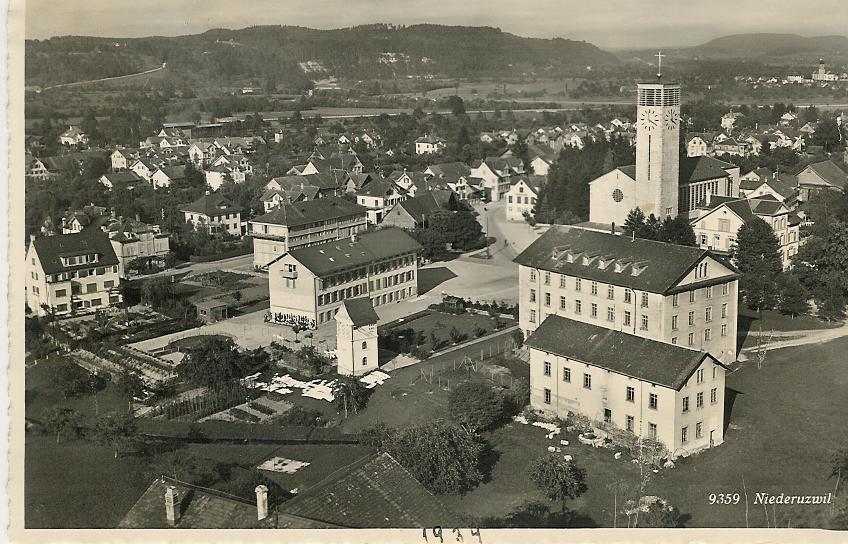
Niederuzwil – 1934
1932 – The dream begins to come true. There are two SIGNS that affirm the priest’s plan. They give him the certainty that God’s Hand is at work! The first sign: The Superior General of the Pallottines, at that time headquartered in Limburg an der Lahn, Germany, understands and supports the plan of the priest from Switzerland. She agrees to send a few well-trained German sisters to Switzerland soon. (At this time there is already a link between the German Pallottines in Limburg and Switzerland. A few sisters have already been working in the Pallottine Brothers branch in Gossau since 1926.)
The second sign: A few factory buildings have been standing empty in the middle of the town of Niederuzwil. An association is founded that is to look after the concerns of the sisters and their planned maternity home. These buildings can be purchased by the association on favourable terms.
The young German sisters are sent at the double, out to Switzerland, to NIEDERUZWIL. Luckily, they bring robust health and a strong faith as well as a great deal of missionary enthusiasm with them. They find themselves confronted by formidable poverty: The very basics needed for accommodating the sisters, as well as the maternity home, are lacking. Shortly before the first mother-to-be arrives, the first cot is donated. The young women truly feel themselves to be missionaries and attempt to deal bravely with the circumstances. In addition, there are the language problems. Plus, as Germans they are met with scepticism at that time, because Chancellor Hitler triggers ambivalent feelings among some Swiss. All the more reason for amazement, as the home grows and prospers. The “Caritasheim” is the “des res” for mothers and fathers in the surrounding area! Soon a children’s home is opened that offers the families a further option for relief. Then come two nursery schools. Furthermore, space is made for a few retired men and women. Plus, a nurse is made available for home nursing. In addition to the nursing, this sister also develops an active course offering for home nursing in the whole region.
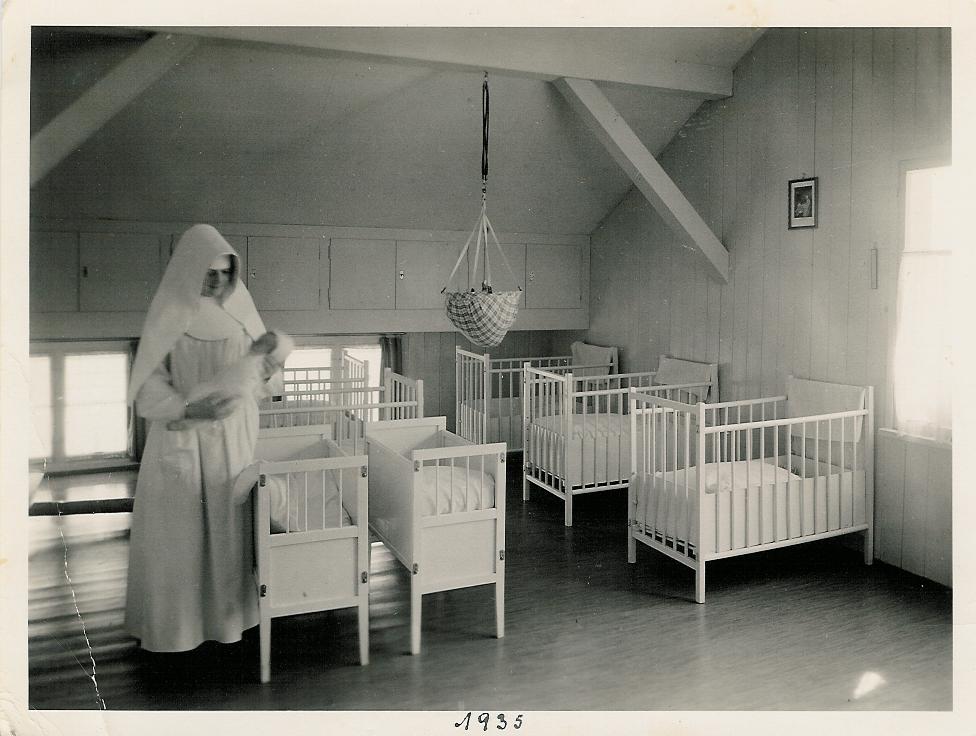
1935
The Pallottine missionary sisters develop broadly diversified activities in just a few years. Their impact could be compared to a flower bulb, inconspicuously resting in the earth. It gets water, sun and heat and springs up into a thing of beauty that amazes everyone.
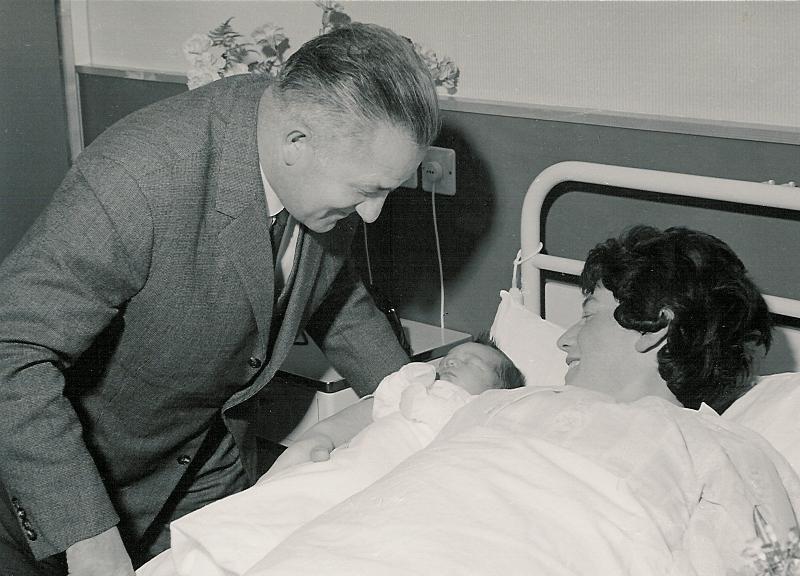
After giving birth
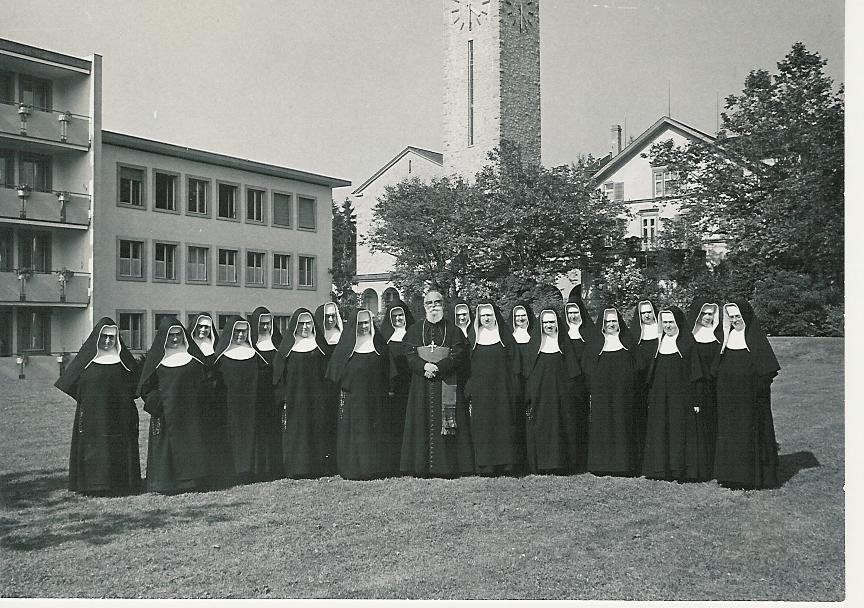
Community in Niederuzwil
Small wonder then, that the innovative priest, Jakob Gähwiler, wants to have Pallottine missionary sisters at his new parish, too. Thus, another branch is founded in BERNHARDZELL in 1944. The noviciate is erected there and the first Swiss women are trained there for religious order life. The sisters manage a home for the elderly, are active in home nursing, teach in the primary school, teach handicrafts, work in the nursery school and teach religious education, as well as doing parish pastoral care.
Before the construction of a Swiss noviciate, a few Swiss women were trained for the religious order life in Limburg. For decades they work as missionaries in the US, in South Africa, in England, in Germany and in Switzerland.

Postulants, novices and professed sisters in Bernhardzell

Kindergarden
1950 / 1960 – At the end of the 1950s and beginning of the 1960s, a brisk programme of construction work is begun at the various branches of the Pallottine missionary sisters: In place of the run-down maternity home in Niederuzwil, a modern clinic that corresponded to the requirements of the time takes shape. Besides obstetrics and gynaecology, there is also phlebology and ophthalmology. In addition, a modern residential home for the elderly is built in the 1970s.
In Bernhardzell a home economics school is built, which is managed by Pallottine missionary sisters. A large building complex is developed, into which a home for elderly people is integrated. At its height, close to forty sisters are working in Switzerland. In 1968 Switzerland is raised to Region status and placed under the General Council.
1970 – Over the course of time, the number of sisters begins to fall. There is a general decline in religious order professions. The Swiss Pallottine missionary sisters are also impacted by this.
1992 – In the 1990s the community is confronted by the question of how the future will look for their institutions. This is very painful for the sisters, because in the Swiss Region, the sisterhood has developed certain special characteristics; a high degree of identification with the apostolate duties and a great deal of closeness to the people. The reason for this seems to be due to the second World War, when from 1939 to 1945, the Pallottine missionary sisters in Switzerland – protected from the war – became isolated. The young community gave its lifeblood to its work and was completely dependent on itself. Due to the war, it was not able to fall back on its mother house, which had always given it support in the early founding years. This was a defining experience!
From the mid-1990s the Pallottine missionary sisters are able to place all their institutions – those in Bernhardzell and in Niederuzwil – into other hands. Where possible, they continue to be managed in the spirit of the Gospel and thus in the spirit of the Pallottine missionary sisters.
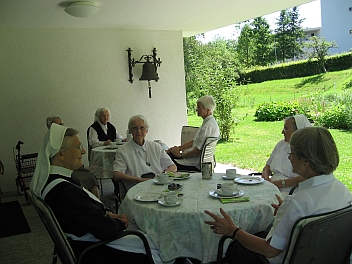
Community in Pallotti-Huus, Niederuzwil
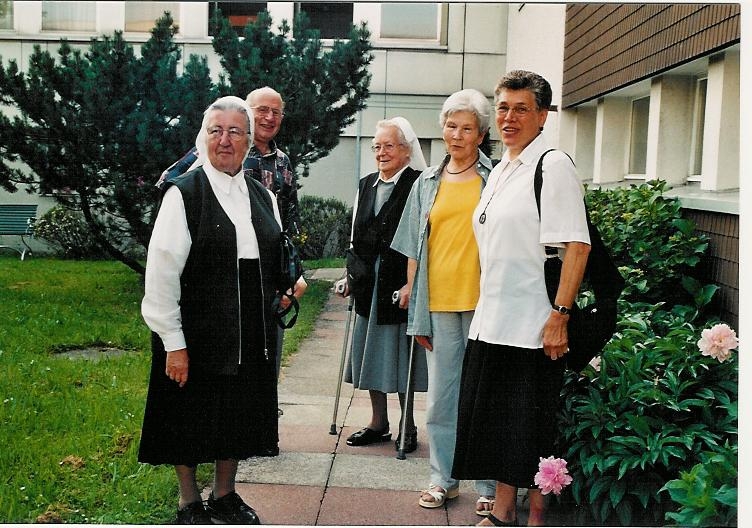
Community in Bernhardzell with guests
2010 – The community of Pallottine missionary sisters in Switzerland counts nine members today who continue to live and work in Niederuzwil and in Bernhardzell. As a Swiss community they are governed by the General Council. In Bernhardzell the sisters are mainly working in UNIO and visiting elderly people in the parish. In Niederuzwil the sisters are offering the Spiritual Exercises of St. Ignatius of Loyola and spiritual retreats in their own building and elsewhere. The sisters’ house in Niederuzwil, the “Pallotti-Huus”, is an open house for people from the area to join in celebrating the Eucharist and to participate in the prayers said at the canonical hours by the community.
Particularly in recent times, cooperation within UNIO is being strongly promoted and practiced. The information sheet “NOVUM – Nachrichten der pallottinischen Gemeinschaften Schweiz UAC” [“NOVUM – News of the Pallottine communities of Switzerland UAC”] points this out. The first issue appeared in January 2010.
The handover of the institutions gives us, as a community of Pallottine missionary sisters, more space for our original purpose: the encounter with God, which influences our everyday lives.
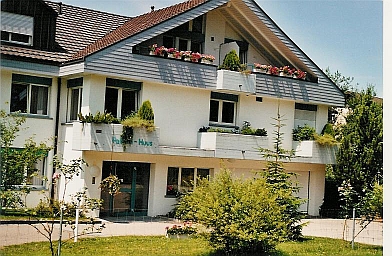
Pallotti-Huus Niederuzwil


